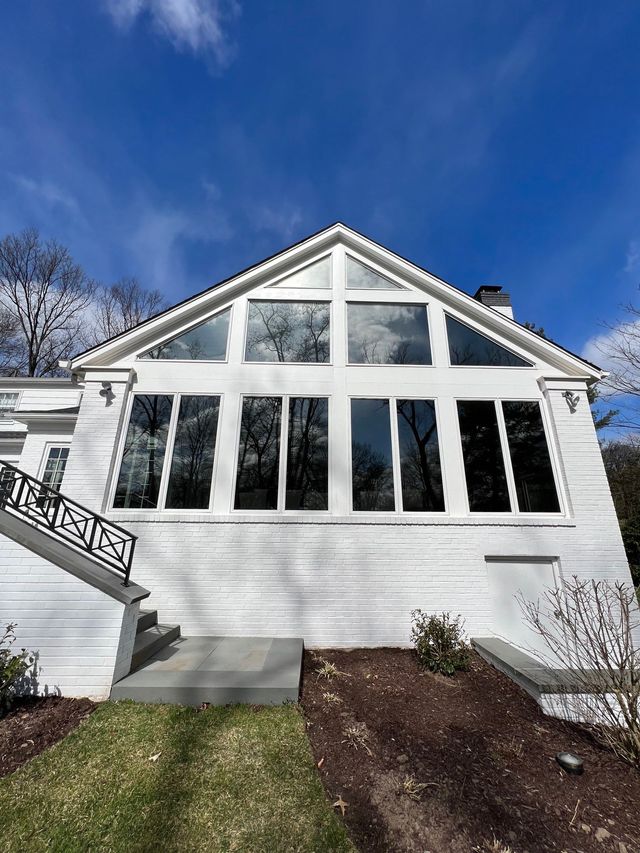Residential Window Tint: Safeguard Your Furnishings from UV Damages
Residential Window Tint: Safeguard Your Furnishings from UV Damages
Blog Article
Exactly How Residential Window Tinting Boosts Your Home's Power Performance
Residential window tinting provides an engaging service for property owners seeking to improve power efficiency within their living rooms. By applying specialized movies to home windows, it effectively lowers warm transfer, consequently supporting interior temperature levels and lessening the need for extreme heating or air conditioning.
Recognizing Home Window Tinting
Recognizing window tinting is necessary for property owners seeking to boost both convenience and energy performance in their home. Residential Window Tint. Window tinting includes the application of a thin film to the inside or exterior surface area of glass windows. This movie can considerably regulate the amount of sunshine and warmth that goes into a home, thus affecting interior environment problems
There are different kinds of window tinting films available, each with distinctive homes. Colored films soak up solar power, while reflective movies deflect it away from the glass surface area. Ceramic films use a balance of exposure and warm rejection, making them a prominent option among homeowners. The performance of window tinting is typically measured by its Visible Light Transmission (VLT) percent, which shows just how much light can go through the film.
Benefits of Power Efficiency
Window tinting not only enhances aesthetic appeals however also plays a significant duty in boosting energy effectiveness within domestic areas. By decreasing warmth transfer via home windows, tinted movies develop an extra steady indoor climate, which can cause considerable reductions in energy consumption for home heating and cooling. This power performance converts right into reduced energy costs, offering house owners with substantial long-term financial savings.

Furthermore, window tinting boosts the convenience of living areas. By minimizing glow and blocking harmful UV rays, tinted windows produce a more positive atmosphere, which can lead to enhanced well-being for owners. The security against UV rays additionally assists preserve furniture and flooring from fading, adding to the longevity of household things.
Exactly How Tinting Works
Tinting films run through a combination of advanced materials and technologies designed to control the amount of solar power going into a home. Mostly composed of polyester, these movies often integrate metallic or ceramic bits that show and take in warmth. This twin ability enables them to dramatically decrease the penetration of ultraviolet (UV) rays and infrared radiation while permitting visible light to travel through.
The efficiency of home window tinting is measured by its solar warm gain coefficient (SHGC), which shows exactly how much solar power is sent through the window. Reduced SHGC values are better as they represent higher heat being rejected. Furthermore, home window tints can feature a range of tones, allowing homeowners to personalize their aesthetic preferences while enhancing energy performance.
Additionally, these films serve as an obstacle, protecting against warmth loss throughout chillier months by reflecting interior heat back right into the home. This thermal insulation effect enhances the cooling advantages gained during warmer months, adding to a well balanced indoor climate year-round. By managing solar power effectively, property home window tinting not only improves comfort yet additionally plays an important role in lowering energy usage and lowering utility costs.
Choosing the Right Color

There are various sorts of home window movies readily available, including dyed, metalized, and ceramic. Colored films are economical yet might have limited longevity. Metalized films offer look what i found far better heat being rejected yet can conflict with digital signals. Ceramic films provide superb warm control without compromising visibility and are highly durable, making them a preferred selection.
Visible light transmission (VLT) is an additional important factor, as it indicates the amount of all-natural light that can travel through the tinted glass. Property owners need to select a color with a VLT that matches their illumination choices while still providing appropriate glare decrease.
Additionally, assessing the solar warm gain coefficient (SHGC) can help determine how well a color can obstruct heat from sunlight. A lower SHGC shows much better warm control, ultimately boosting power performance.
Setup and Upkeep Tips
Proper installment and maintenance are important components in taking full advantage of the advantages of residential home window tinting. To accomplish ideal outcomes, it is advisable to work with a qualified specialist for installation. This makes sure that the tint is applied appropriately, staying clear of air bubbles, wrinkles, or imbalance that might compromise efficiency. Specialists likewise use specialized methods and tools, which can boost the durability and performance of the tint.
Adhering to installation, upkeep is crucial to lengthen the life of the home window film. It is recommended to wait at least 30 days before cleaning the tinted home windows to enable the glue to heal totally.
Furthermore, normal examinations are helpful. Look for any peeling or bubbling, which could indicate improper installation or wear over time - Residential Window Tint. Attending to these problems immediately can stop more damages and preserve energy efficiency. By adhering to these installation and maintenance tips, home owners can guarantee their home window tinting remains to provide significant energy visit site financial savings and convenience for several years ahead.
Final Thought
In final thought, residential home window tinting offers as an efficient remedy for enhancing energy performance within homes. By decreasing warmth transfer and blocking dangerous UV rays, window films contribute to decrease power usage and improved indoor comfort.
Home window tinting involves the application of a thin movie to the inside or exterior surface of glass windows. By lowering warm transfer with windows, tinted films develop a more stable indoor climate, which can lead to substantial decreases in energy usage for heating and air conditioning.The performance of home window tinting is measured by its this content solar warm gain coefficient (SHGC), which suggests just how much solar power is sent through the window. By taking care of solar energy successfully, residential home window tinting not only boosts convenience but also plays an important duty in decreasing energy usage and reducing utility expenses.
By minimizing warmth transfer and obstructing harmful UV rays, window films contribute to decrease power intake and improved indoor convenience.
Report this page